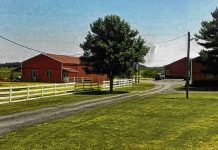The University of Indianapolis plans to send a report to the city of Columbus soon on its analysis of bones found at a local construction site.
“We’ll talk about mostly the process of the recovery, what we encountered and then we’ll have a recommendation for the process going forward,” Principal Investigator Christopher Schmidt said of the investigation. “We’ll definitely want to make sure that we continue to work with (the Department of Natural Resources) DNR on repatriation,” said Schmidt, who is chair and professor of anthropology at the college, as well as the bioarcheology lab director.
The report will also contain information on fragments identified from different individuals.
Bones were first found in May by construction workers trying to locate a 1940s-era clay sewer line as part of the court services building project at 555 First St. in Columbus. The human bones do not make up a complete skeleton, city Redevelopment Director Heather Pope said in a previous interview, and were found about 6- to 7-feet deep, mixed with animal leg bones that had been severed by some sort of serrated saw.
Pope said in late July that additional bones, believed to be human, were found later in the summer. She added that the university’s investigators believed no more bones were at the site. According to Schmidt, the site where the bones were discovered may be their original resting place or close to it.
The University of Indianapolis has been involved in the investigation and is analyzing human remains found on the land. The Indiana Department of Natural Resources has also been involved with the case.
Schmidt said that part of the remaining work will be to “refine” the number of human individuals found from the bone fragments. He believes the correct number is nine, but there are some fragments that need further confirmation. If these do not line up with an individual that’s already been identified, there would be a 10th individual.
Analysis is ongoing, he said.
“It’s been a wonderful project,” said Schmidt, “but it’s definitely been bigger than we anticipated. … Thousands and thousands of fragments, so that’s taken quite a while.”
Investigators use anatomical and bilateral similarities to determine the number of individuals, he explained. Those identified include adult males and females, as well as some individuals who were younger than 18 years old.
The university has also looked at a few material culture artifacts. However, Schmidt said that the university is holding off on talking about these until it consults with native groups in more detail, as these are “sacred objects.”
The items have helped investigators determine the likely time period of the remains.
“Our estimate before, in the field, still holds,” said Schmidt. “So this site is likely around 2,000 years old, plus or minus. It may even be a little older than that, 2,500 years old. But it is in that sort of transition to what we call the Adena.”
According to the DNR, from 1,000 to 200 B.C there was a people group in Indiana that is now known as the Adena culture. This name was given to the group by archeologists, who did not know what members called themselves. The term originates from the name of Thomas Worthington’s farm. Worthington lived in Chillicothe, Ohio in the 19th century.
The Adena was not one tribe, but instead probably a “group of interconnected communities living mostly in Ohio and Indiana.” Over a period of 500 years, the Adena culture turned into the “Hopewell tradition,” another set of interconnected groups also named by archaeologists. Some scholars believe that the Hopewell could have later become the people now known as the Miami or Shawnee.
The “final call” on whether the remains are from the Adena culture will be made in consultation with descendant groups, said Schmidt.
While officials have discussed theories about the human remains being moved from a previous resting place, he said that the area where they were found may be the original burial site or close to it.
“People have been in Indiana for at least 12,000 years and maybe more,” he said. “And so, by the time of the Adena, folks were living all over the state. And they’re well-known from that part of the state. Unfortunately, because of the damage, I can’t tell you exactly what the mortuary process was, but we have no reason to think that that’s not the primary burial area. Either there or very nearby, there was an Adena cemetery.”
Some of the culture’s mortuary treatments have been seen at other sites, such as log tombs. While there is no evidence of anything like that at the site in question, Schmidt suspects there may have been a small mound at the site, containing the remains, that was later flattened when houses were constructed in the 1800s and 1900s.
“We don’t have this confirmed, by any means, but my suspicion is that there’s an Adena settlement nearby, and this is a cemetery for that,” he said. “And the fact that we have some people who have evidence of being cremated and some people who aren’t cremated is very consistent with Adena mortuary practice.”
On the other hand, animal bones found at the site are much newer. These are from the 1800’s and early 1900’s and appear to be mostly “food items” such as cattle and pigs, said Schmidt.
“What we’ve done is distinguish human from nonhuman,” he said. “Our emphasis is on the human remains.”





